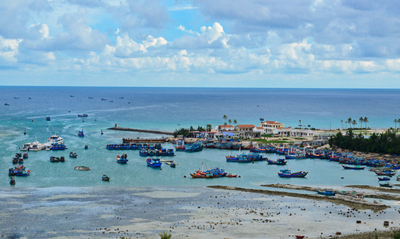Ly Son island district in the central province Quang Ngai, one of Viet Nam’s ten most attractive islands, is focussing on improving its infrastructure and services to take full advantage of its natural beauty.

During the first eight months of 2014, the island welcomed nearly 18,000 domestic and international tourists. The figure is forecast to reach 25,000 by the end of the year.
In early October, the district was officially connected to the national electricity grid, which is expected to help it develop a number of industries, including tourism. Many large-scale hotels and restaurants are currently being built.
A waste treatment facility will become operational by the end of November, thus contributing to environmental protection in the district.
In addition, local authorities are running educational programmes and communication campaigns in order to increase residents’ awareness of the importance of protecting the environment, ecosystems and biodiversity in order to achieve sustainable development and ecotourism.
Ly Son district lies 18 nautical miles off the Vietnamese coast and covers an area of 10km². It includes three communes: An Hai, An Vinh and An Binh.
Archaeologists found relics of Sa Huynh culture on Ly Son Island dating back 3,000 years. From the late 16th century onwards, a number of tribes came over from the mainland and have inhabited the island ever since.
Since the Sa Huynh civilization, Champa and Viet people have lived alongside each other, creating a rich and diverse culture on the island.
At present, there are 50 heritage sites and 23 old religious structures in the area. Some of the pagodas, tombs and temples have been recognised as sites of provincial or national heritage.
The island also boasts numerous forms of intangible cultural heritage, such as traditional boat races and the Hoang Sa Soldier Feast and Commemoration Festival, which was recognised as a national heritage in April this year.
Ly Son strives to become a maritime economic centre by 2025, with a focus on tourism and aquaculture.